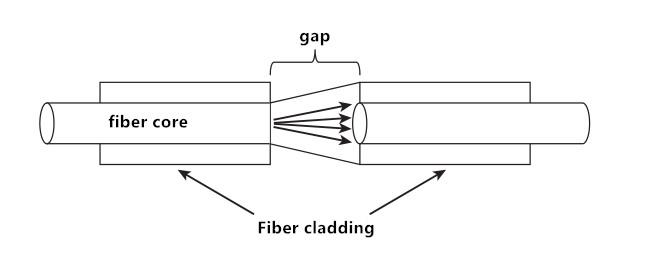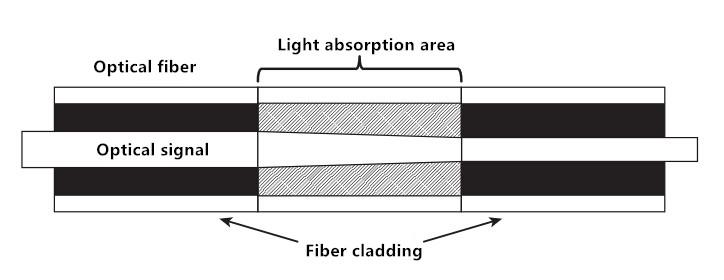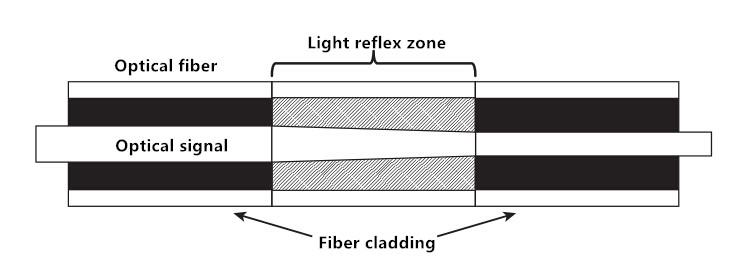- Related articles
- Optical Transceivers for Cisco N7K-M206FQ-23L= Switch
- The Things You Need to Know about 10GBASE-T Ethernet Standards
- What is 10Gb Network Card?
- Optical Transceivers for Cisco ESW-540-8P-K9 Switch
- All Cisco GLC-LX-SM-RGD's information (List price, Specs, Datasheet PDF, Compatibility mat
- Optical Transceivers for Cisco N3K-C3524P-10G Switch
- What Is GJXH Fiber Optic Cable?
- All Cisco CWDM-GBIC-1490's information (List price, Specs, Datasheet PDF, Compatibility ma
- Optical Transceivers for Cisco SF500-24-K9-G5 Switch
- Optical Transceivers for Cisco SG200-26FP-UK Switch

Optical attenuator is a passive optical device, mainly used to reduce the optical power of the optical signal to prevent the optical receiver from reaching the optical power beyond the load range caused by signal distortion; there is a situation in the multi-wavelength channel fiber System, the need for each channel of the optical signal power is roughly the same, so the use of optical attenuator to balance the optical power of each channel. This tutorial will introduce the type and working principle of the optical attenuator in detail.

The type of light attenuator
Depending on the attenuation mode, the optical attenuator can be divided into fixed optical attenuators, graded variable optical attenuators and continuously variable optical attenuators.
Fixed optical attenuator
The attenuation of the optical power in the optical fiber link is fixed and the theoretical attenuation can be set to any value. This optical attenuator has FC, SC, ST, LC and other connectors optional, easy to install, simple structure.
Graded variable optical attenuator
The attenuation of the optical power in the fiber link is not fixed, which can be 0.1 dB, 0.5 dB or 1 dB, and so on. This optical attenuator is typically used in applications with multiple optical power sources. For example, the optical receiver is to receive optical signals from three different light sources, and in order to keep the power of each optical signal within an acceptable range of the optical receiver, it is necessary to use a hierarchical variable optical attenuator for each light Power to varying degrees of attenuation.
Continuous-variable optical attenuator
The amount of attenuation of the optical power of the continuously variable optical attenuator can be adjusted according to the specific needs, and is often used to quickly and accurately adjust the optical power in the optical fiber link in applications where the input optical power and the output optical power are constantly changing.
The working principle of optical attenuator
The optical attenuator can use different methods to carry out a predetermined amount of attenuation of optical power, the common working principle are: displacement loss, absorption loss, and reflection loss.
Principle of displacement loss
Displacement loss refers to the fiber in the docking intention to make it a certain degree of dislocation, thereby loss of part of the optical power, to achieve the purpose of controlling the attenuation. This principle can also be broken down into three kinds of transverse dislocation and longitudinal dislocation, lateral dislocation refers to the two fibers in the horizontal direction is not a straight line, the two core of the occurrence of a certain dislocation; longitudinal dislocation refers to two optical fiber In the horizontal direction was a straight line, but the middle of a certain distance, as shown below:

The optical attenuator with the principle of displacement loss is very sensitive to the mode field distribution near the light emitter. It is proved that the farther away from the optical emitter, the worse the attenuation effect is, so we will use the displacement type optical attenuator after the light emitter, to ensure that the desired amount of light attenuation is achieved.
Principle of absorption loss
Absorption loss principle is by absorbing part of the optical signal to achieve the purpose of attenuation of optical power. The optical attenuator using this principle utilizes the absorption characteristics of the material to the light, and the optically polished neutral absorbing glass sheet is made into a sheet or strip of neutral dark glass in the optical path (as shown below), thereby reducing the light The optical power of the signal. A single piece of sheet-like light-absorbing glass can be made into a fixed attenuator, and a plurality of pieces of sheet-like light-absorbing glass can be made into a variable-grade optical attenuator by roulette conversion, and the strip-shaped light absorbing glass can be continuously variable by continuous displacement Optical attenuator.

Principle of reflection loss
The optical attenuator using this principle mainly utilizes the reflection characteristics of light. We know that light reflection and scattering is one of the main sources of loss during optical signal transmission. The optical attenuator with reflection loss principle adds a layer of reflective film design (as shown in the figure below) to its internal fiber To attenuate the optical power.

Conclusion
With the continuous development of optical communications, optical attenuator applications are more and more, in order to ensure high-speed optical fiber link error transmission, so it is essential that the optical attenuator with channel signal power to a certain value.





































































